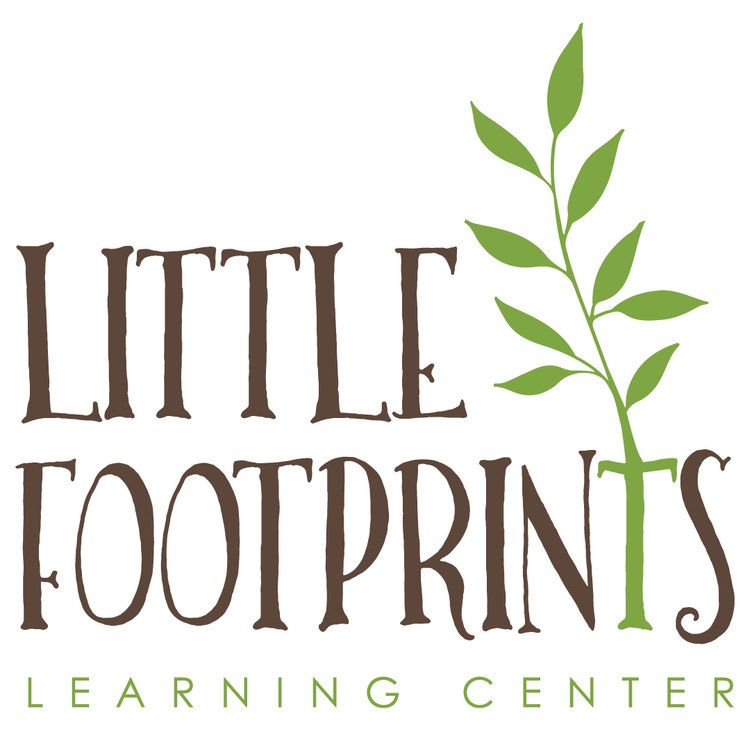Our Philosophy
To provide care in a stimulating and homelike environment where children can learn and develop through their explorations and play. Little Footprints’ programs for infants through preschool respect the individuality of each child and foster the development of each child’s emotional, intellectual, physical, and social skills through age-appropriate activities, equipment, and materials.
In all that we do, we put the child’s needs first – in our space design, in our program planning, in our selection of materials/equipment, and in our choice of experiences and activities. Our focus is the child.
When planning the day, we observe and listen. Children “tell” us just what they need – by crying, cooing, laughing. talking, dancing, and even acting out – and we need to listen to their language.
We take our cues from them. At Little Footprints, children often lead and we follow their lead by providing materials and equipment that will enhance whatever it is they are doing. We give them the freedom to make choices, to use their imaginations, to solve problems, to move, to take risks, to think, to make decisions, and to explore all that is waiting to be explored.
We believe that children need a day that suits their particular temperament and pace, with people who provide assurance, comfort, and support.
We value children for what they CAN DO – right now. We celebrate achievements! We focus on the present, and enjoy each age and stage of growth and development.
Little Footprints is an environment-based program for care and learning. We believe that the two are inseparable. Children learn from the entire experience the day provides. The way time and space are planned, the furnishings, the equipment and materials, and all the ways adults and children behave, teach the child what the world is like, how it works, what the child is capable of, and his/her place in it.
We respect parents as the most important people in their child’s life and work in partnership with them in order to meet the child’s individual needs.
Our Curriculum
Children entering Little Footprints are welcomed into a program that embraces play as the chief method by which children learn about the world. Teachers understand that play is at the heart of children’s learning and they provide ample time and materials for the children to explore and experiment. Teachers also understand that children are active, sensory learners who need many opportunities for self-chosen exploration, social interaction, and problem solving. Teachers are more interested in the process of children’s learning, rather than the product and they encourage and observe children as their critical thinking skills unfold. Teachers observe children in order to gain insights into their play themes, interests, questions, skills, and frustrations. It is through these observations that teachers plan a curriculum that meets the needs of each child.
We believe in creating classroom environments that are homelike in comfort, beautiful in design, and properly prepared for a variety of activities that are of interest to children. We strive to create peaceful and nurturing places for children to spend their days. We look at the environment as one of the child’s first teachers, a place that supports calm, focused, and purposeful activity. We respect children’s needs for privacy as well as socialization, and therefore provide spaces for children to be alone, as well as to play in pairs, small groups and large groups. We understand that children are just learning how to interact with others, and teachers model kind and respectful treatment of people, animals, and things. We believe that creating a sense of community within the classroom will foster a sense of responsibility, respect, and empathy for others. We invite parents to share their family culture with us and we offer children a wide variety of music and literature that represents many cultures, families, and lifestyles. We provide equal access of all materials and activities to both boys and girls, supporting and encouraging their play and activity choices.
We believe that the environment should be sensory-based. It should offer children a variety of materials to touch, taste, smell, and listen to on a daily basis. In addition, children in our care are given many opportunities for messy and outdoor play. We stay away from commercial toys. Instead, we use materials that provide open-ended exploration and experimentation. These materials include: clay, play-dough, magnets, water play with funnels and containers, sand play, easel painting, dress-up and dramatic play, literature of all kinds, puppets, baby dolls, items from nature, recycled materials, and blocks – to name just a few. The curriculum is child-centered and emergent. Teachers observe children closely to see what they are doing and why. Then the environment is designed around the children’s interests, needs, and questions. There is intention behind everything we do in preparing the environment and implementing the curriculum.
The most important goal of the program is to help children to become enthusiastic, confident learners. This means we encourage children to be active, creative explorers who are not afraid to try new things and think their own thoughts. You will not find worksheets or activities that encourage conformity and competition among children. Rather, we strive to help children become independent, self-confident, and inquisitive. We are teaching them how to learn, not just in preschool, but for the rest of their lives. We allow them to learn at their own pace in a supportive classroom environment where trust and harmony contribute to a child’s developing sense of self and a desire to be an active learner. Our overarching goal is for children to feel safe, secure, competent, and valued for who they are.
Our whole language emphasis develops children’s emergent literacy skills by providing them with a print rich environment and many opportunities for children to read, write, sing, and speak throughout the day. Children are exposed to fiction, nonfiction, drama, poetry, and song. Board books, big books, picture books, chapter books, newspapers and charts are used to help children make the reading/writing connection.
